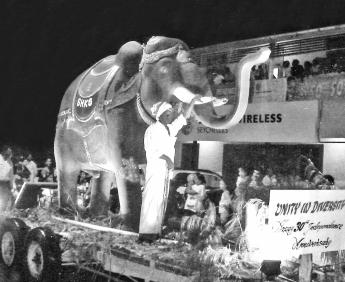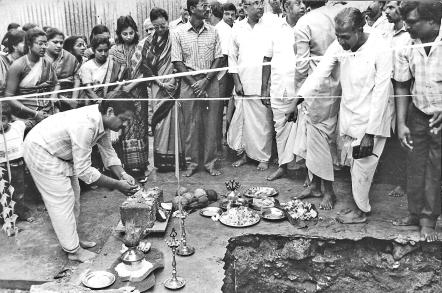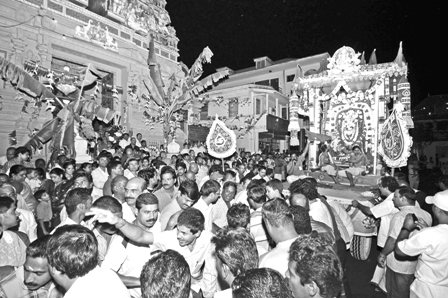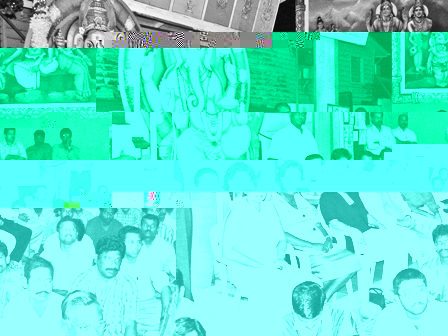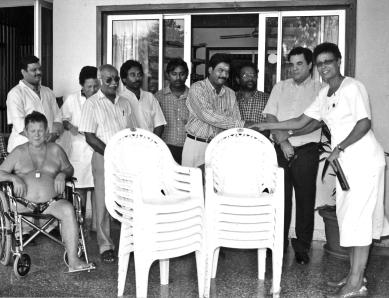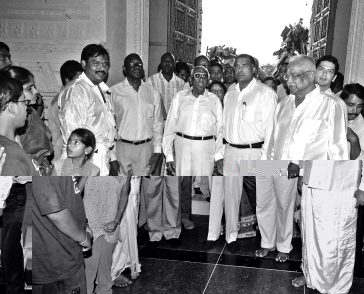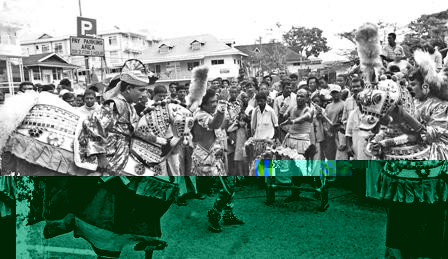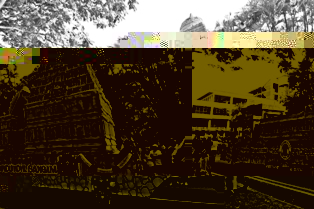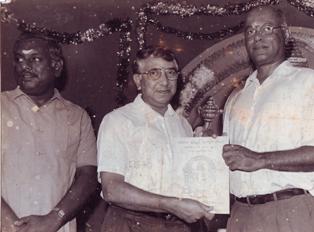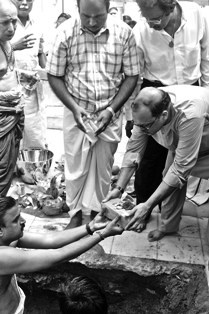TWO DECADES OF THE HINDU TEMPLE IN SEYCHELLES |04 February 2012
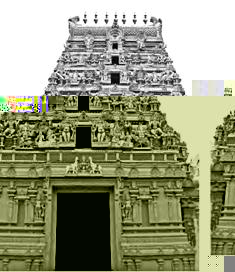
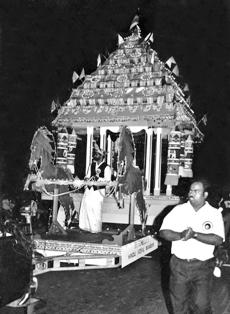
As residents living away from their origin, their aspiration was to follow their religious customs and cultural traditions. In 1984, the Seychelles Hindu Kovil Sangam registered association was established and Hindu devotees conducted their spiritual worship in an upper storey of a rented building at Quincy Street. With the untiring efforts of many, land was purchased for the construction of the first Hindu temple as a house of worship for Hindu devotees.
With further persistent efforts of Hindu devotees and the support of the Government and people of Seychelles, the Navasakthi Vinayagar Temple was consecrated in 1992 with Lord Sri Navasakehi Vinayagar as the main deity. Temple rituals were gradually extended and poojas are performed four times a day. Every morning and evening, as per the schedule of the temple and the religious calendar, special prayers (Abhshekams and poojas), are performed for Vinayagar and other deities. Traditional music is also performed during these moments of prayers.
According to Hindu customs, a temple must be fully renovated after 12 years in existence and the function of Kumbabishegam (consecration ceremony) to be performed. The association in coordination with highly specialised Indian architects and Vijay Construction in Seychelles pursued with the construction of the newly designed 5-tier tower (Rajagopuram), and the renovation and rejuvenation of the rest of the existing temple. It must be mentioned that the Indian Architecture and sculptural forms of the tower and the related aesthetical details and symbols are very enigmatic and mystic.
Whilst craftsmen are constructing the tower they are spiritually guided in such a way that each and every form and detail of the tower is specifically, uniquely and intricately placed. A flag post is also erected in the temple and 7 gold kalasams are placed on the top of the tower. The renovation of the temple commenced in 2005 and on the 20th January 2008, a team of priests and religious leaders, the Vice President from Mauritius and Seychelles attended the consecration ceremony of the temple.
The temple, which opens its doors to the whole Seychelles nation as well as tourists and foreigners visiting our country, is a well-known land mark in the capital city and has become one of the major tourist attractions of Victoria. It is not only a venue of worship but also a place where the encouragement and promotion of cultural activities takes place to ensure the growth of peace and goodwill in the country. Here, religious and cultural education is also imparted to children and it serves to highlight the unparalleled Hindu philosophy to create an atmosphere of brotherhood and religious harmony among all.
The temple hosts 2 main annual events:
Kavadi Festival and procession
Hindu Chariot Procession
The Kavadi Festival takes place either in January or February according to the religious calendar. This annual historical, colorful event attracts many tourists. The festival not only reinforced the importance of our religious rituals among the residents of Seychelles, but also helped in fostering the great traits of tolerance, peace and brotherhood among all. The event is followed by a special lunch for everyone. This is combined with Annadanam, in which people of all nationalities partake in a vegetarian meal. This ritual signifies the importance of hospitality which is an exemplary trait of our religion. The Government of Seychelles has realised the importance and the great message conveyed by this Kavadi festival and continues to allow a restricted holiday for the Hindus on Thai Poosam day.
The Hindu Chariot Procession carrying the chief deity Shri Navasakthi Vinayagar, which is celebrated at night, takes place in either August or September, according to the religious calendar. This grand procession with its colourful light displays pursues its course onto the streets attracting many people as well as tourists. This ritual has become a ten day event with the hoisting of flags. People gather in large numbers to witness this spectacular night event. The Chariot is pulled by all devotees who take part with spiritual devotion. Then the people who have gathered there are given ‘Kozhukkattai’, (a sweet). It is our belief that this reinforces our spirituality on the soil of Seychelles, the minds of the people living here and all those who visit these islands.
Other main Events Performed inside the Temple:
The Commemoration Anniversary of the Temple in Seychelles is celebrated either January or February according to the religious calendar, during this time special prayers (Poojas) are offered.
The Holy Lamp Festival is yet another activity that occurs at the Temple. All women take part in this prayerful event which is accompanied by a display of lights. The event is conducted on a Friday in the months of February and August.
Every year, the divine wedding celebration of Lord Subramanya with his consorts Valli and Devasena is performed on a grand scale to portray the significance of the ritualistic Hindu weddings to the people of this nation.
This ceremony also establishes the philosophy of family life which is highly informative to everyone.
In Seychelles, cremation as per Hindu practices takes place at Providence and the association is responsible for coordinating all the necessary arrangements pertaining to this ritual.
Social and Cultural Activities:
The basis for the activities of the temple and Hinduism is to foster social well-being. By partaking in the functions of the Government and our determination to encourage the people of Seychelles to develop an understanding of our culture, the temple strives to encourage religious harmony among people. Praying sessions in the temple contribute immensely to our Nation’s welfare. Prayers are offered particularly during periods of hardship in the country; during periods of drought for example special Yaha and Pooja prayers are offered.
The Temple has had great pleasure in participating in several key cultural events in our country. It has proudly participated in the National Day, Creole Festival week and Carnival celebrations with spectacular floats and processions. In 1996, as part of the float procession on National Day, we were honoured to receive a prize for our display of a traditional colorful chariot illuminated with decorative lights. We made a remarkable religious-cultural presentation in the welcoming celebrations of the new Millennium celebration in 2000. For the Silver Jubilee of the Independence of Seychelles in June 2001, we had the privilege to be involved in the grand float procession where the temple presented a float that resembled decorative peacocks. 2006 saw the 30th Independence Day Anniversary where we once again had the opportunity to display a ornamental elephants and palace decorations to the public. During the 25th Creole week festivities we were delighted to exhibit a colourful float as well as show people our exquisite, Indian, cultural dances.
The Temple proudly paid tribute to the opening ceremony of the International Carnival Festival event held in 2011. As a participant, a special musical group from India presented a spectacular musical and dancing show known as Kathakali, accompanied with special cultural drums. Simultaneously to this, we displayed yet another float demonstrating the delicate, architectural decorations similar to the Thanjavour Temple which has existed for thousands of years in South India.
The temple has also played a role towards helping vulnerable people in our society. It contributed towards relief aid when our country and other countries were rocked by natural disasters (tsunami, earth quakes as well as others) and gave voluntary help to the North East Point Rehabilitation Centre.
From the time of its inception, dignitaries - ministers of Seychelles, Indian High Commissioner for Seychelles and foreign ministers from abroad have taken part in all the functions of the Temple and have graced these occasions: Mr. Manian, Editor of the religious magazine “Gnanabhoomi” and Mr. Vijay Patel together laid the foundation stone for the temple in 1990. The Seychelles minister for Local Government and Culture, Mr. Sylvette Pool, the Mauritian minister for Education and Science, Mr. Parasuraman and the former Speaker of the Tamil Nadu legislative Assembly, Mr. K. Rajaram, were among the dignitaries present for the 1992 Kumbabhishekam. In addition, ministers of Seychelles, Mr. Patrick Pillay, Mr. Danny Faure, Mr. Ronny Jumeau, Dr Shamlaye and Indian High commissioner: Mr C.R.Balachandra Mr Malay Mishra, Mr R.O.Wallang also took part in the various functions of the Temple.
In 2005, the mayor of Victoria, Mrs. Florence Benstrong, and the Indian High Commissioner of Seychelles, Mr. Arun Kumar Goel, had the honour of laying the foundation stone for the construction of Rajagopuram. The Vice President of Mauritius, Angini Veeriah Chettiar, Vice President of Seychelles, Joseph Belmont, the Minister for Community Development, Culture, Youth and Sport, Mr. Vincent Meriton, Leader of Opposition, Mr. Wavel Ramkalawan, top government officials, members of the diplomatic corps and tourists were present during the consecration ceremony of the Temple tower, Rajagopuram in 2008.
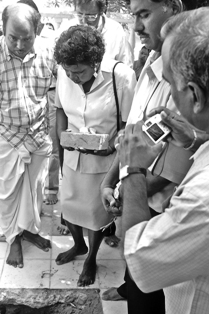
Laying of the Foundation Stone of the tower (Rajagopuram) 2005
As a final but sincere message to all, the Temple warmly welcomes and embraces the Seychellois nation as well as people from all over the world bringing love, peace and harmony to the living community.
Written by - V.T.Veerapandian Pillai





